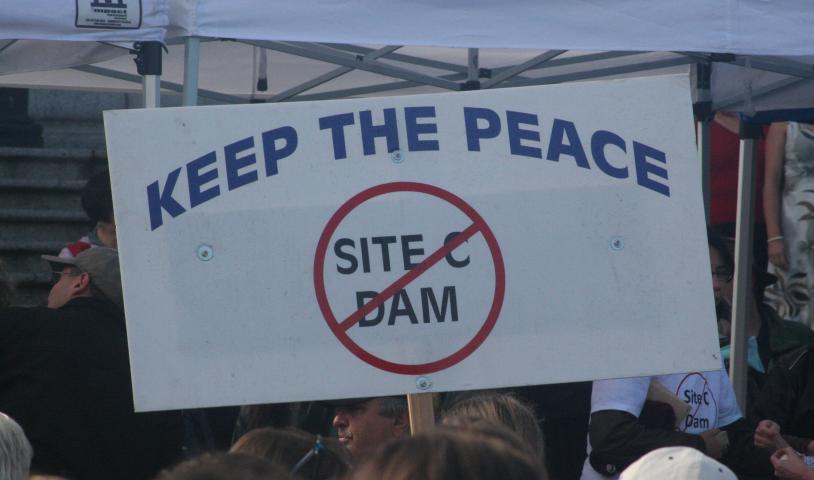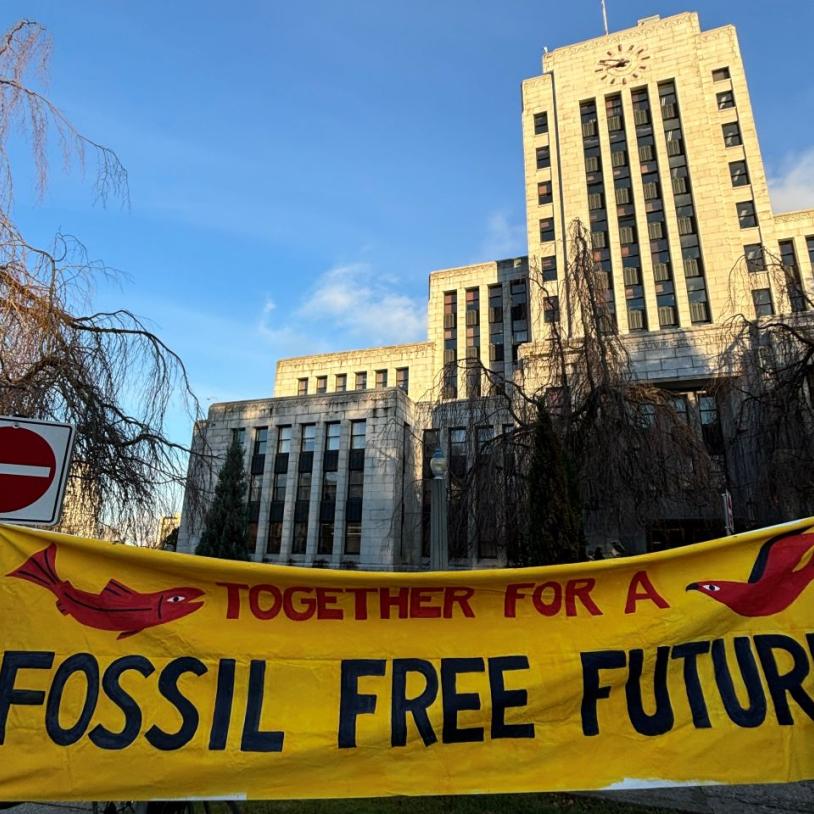Guest column: We lose more than we gain with Site C dam ‑ Editorial by the Wilderness Committee's Tria Donaldson
Thursday, July 14, 2011
For 30 years, the people of the Peace River Valley have been living in the shadow of the proposed Site C mega dam. For 30 years, people all over the province have been fighting this costly and destructive project.
Last weekend, I took a more than 30-hour return trip to Peace River Country to explore the land and meet the people whose lives will be forever altered if this dam is built.
I headed up to participate in the sixth annual Paddle for the Peace, an event co-organized by the Peace Valley Environment Association and the West Moberly First Nations as a symbolic protest against the destruction of the beautiful Peace River Valley.
Unfortunately, the entire south Peace region was under flood warning. Weeks of heavy rain had a devastating impact on the road system and the river riparian zones. The conditions of the river lead to the cancellation of the paddle, but the rain was not going to stop the friends of the Peace River from gathering.
Over 200 people met on the river banks to share food and stories about the rich history and uncertain future of the valley. We were a diverse group — First Nations, ranchers, environmentalists and history buffs — all united by one message: the cost of the Site C Dam is too high.
The $8-billion price tag tied to the project keeps rising. This expenditure comes on top of a proposed 33-per-cent increase in Hydro rates to pay for retrofits to aging infrastructure. The added expense of this mega project will fall on the shoulders of taxpayers and Hydro ratepayers.
On top of the financial costs, the environmental costs are enormous. Site C would flood a 100-kilometres length of fertile valley bottom. Hectares of boreal forest would be stripped away, destroying critical habitat for moose, beavers, elk, mule deer and hundreds of bird species. The low-lying valley is key to the migration of many species, connecting the north and south ranges to the larger, continentwide Yellowstone-to-Yukon conservation corridor.
In addition, over 2,800 hectares of the best farmland in northern B.C. would be lost forever. It would submerge the remains of the oldest European settlement in B.C., and restrict water flow, impacting sensitive wetlands downstream in Alberta and the Northwest Territories. Pioneer families who have lived in the valley for generations would be flooded out of their homes. The hunting, trapping and fishing rights of the Treaty 8 First Nations would be impacted, and over 75 cultural sites will be flooded.
Visiting the valley in an extreme weather event was a reminder of one of the major engineering issues facing the development of the dam. The valley has a history of major landslides and erosion, and there are several areas of concern which present stability problems for the potential reservoir.
Similar problems have occurred at the Williston Reservoir, just upstream from the proposed Site C. Every year, more soil from the banks falls into the reservoir, causing siltation which decreases capacity to generate electricity.
The first two times that Hydro proposed Site C, it was turned down by the B.C. Utility Commission because Hydro was not able to demonstrate the need for the power, or show that Site C was the only viable option for energy. Since then,
the commission’s role in overseeing Site C has been removed.
With so much at risk, and such a high cost to the provincial coffers, why would anyone want to go ahead with Site C?
The government says we need the power, but B.C. Hydro’s own reports show we can meet increased energy demand for the next 20 years simply through conservation measures. In addition, Hydro’s future forecasting doesn’t include the downstream benefits from the Columbia River treaty, which entitles the province to electricity credits we are currently accessing as money.
There are also countless energy alternatives that have yet to be properly explored and invested in, such as geothermal, solar or tidal power.
Some proponents argue that Site C is ‘greener’ energy because it’s not fossil-fuel based, but the reality is that much of the electricity generated by this mega dam will go to power shale-gas extraction in the region and other mining projects in northern B.C.
The Peace Region is already reeling from the impacts of the first two dams on the Peace. Oil and gas has further fragmented and stressed the ecosystem.
The valley is all that is left. Now, because of Site C, it is under a constant flood warning.
We need to keep this valley intact. We need keep the Peace River flowing.
We need to stop the Site C Dam, once and for all.
***
Tria Donaldson is the Pacific coast campaigner of the Wilderness Committee.





